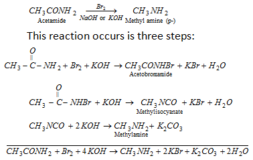Formaldehyde

source : wild mint shop

source: This land
Chemical Properties of Formaldehyde –
1) Oxidation –
Aldehydes are easily oxidised & thus act as reducing agents . Aldehyde on oxidation form corresponding acid containing same number of carbon atoms.
-CHO +[O]—–> -COOH {acid}
HCHO + [O] —–> HCOOH [Formic acid]
Oxidising agents may be strong such as acidified K2Cr2O7 or acidified KMnO4 or mild such as Tollen’s reagent or Fehling solution or Benedict solution.
Tollen’s Reagent-
It is an ammonical solution of Silver nitrate. When aldehyde is added to tollen’s reagent, Ag2O is reduced to silver which deposits as black ppt. or silver mirror.
-CHO + Ag2O—-> -COOH + 2Ag (silver mirror)
HCHO + Ag2O—-> HCOOH + 2Ag (silver mirror)
Fehling solution-
It is an alkaline solution of cupric ion complexed with sodium potassium tartarate . Aldehyde reduces cupric ion (blue ) to cuprous oxide (red).
Fehling solution I – dilute solution of CuSO4
Fehling solution II – Sodium potassium tartarate & NaOH
HCHO + 2 CuO —–> HCOOH + Cu2O(red ppt. of cuprous oxide)
Benedict’s solution- It is a solution of CuSO4, Sodium citrate & Na2CO3. When heated with an aldehyde , a reddish brown ppt. appears.
2) Schiff’s Test-
Schiff’s reagent is a dilute solution of rosaniline hydrochloride whose red or pink colour disappears by passing SO2. Aldehydes when treated with Schiff’s reagent, restore its pink colour.
3) Reaction of Formaldehyde with alkali –
Formaldehyde forms a complex product with ammonia.The product is hexamethylene tetramine or Urotropine.
6HCHO + 4NH3—->(CH2)6N4 +6 H2O
Urotropine is used as medicine in case of urinary troubles.
4) Cannizarro’s reaction-
In this reaction one molecule is oxidised & other molecule is reduced to alcohol.
2HCHO + NaOH ——> CH3OH +HCOONa
5) Condensation Reaction-
HCH=O + HCH=O —–>HCH(OH)CH=O [Glycollic aldehyde] ——–> HCH(OH)CH(OH)CH=O
——-> HCH(OH)CH(OH)CH(OH)CH(OH)CH(OH)CH=O [Formose ]
6) Polymerization:
a) Para formaldehyde :
when aqueous solution of formaldehyde is evaporated to dryness, a white crystalline solid.
nHCHO <—–> (CH2O)n (paraformaldehyde) (n = 6 to 50)
b) Meta formaldehyde :
On allowing formaldehyde gas to stand at room temperature, it polymerises to form meta formaldehyde i.e (HCHO)3. It is a white solid.
3 HCHO <—-> (HCHO)3
Uses:
- Medical specimens.
- It is used in the preparation of urotropine which is used as medicine.
- It is used for making synthetic plastics like bakellite, urea formaldehyde, resin etc.

- source :safer chemicals.org







